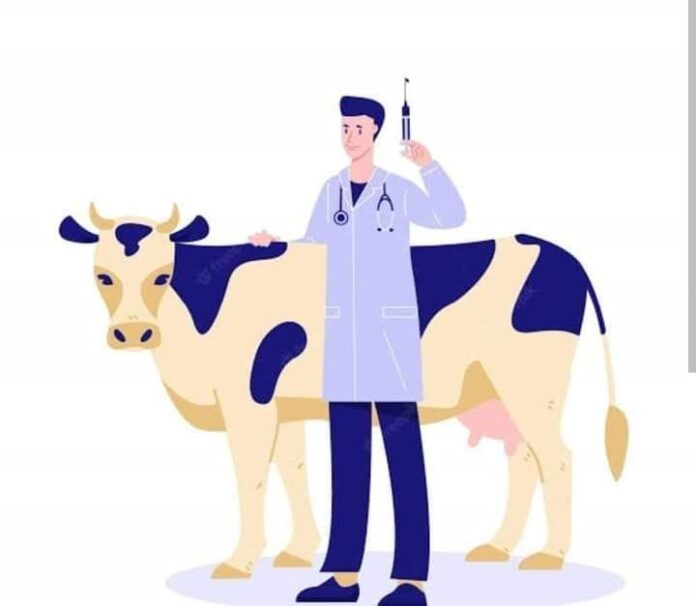Insights into the Human-Animal Relationship: Perspectives from Agriculture, Animal Welfare, and Psychology
Dr. Juli Chakma1; Dr. Divyaprakash R. Choravada2
- Division of Animal Nutrition, ICAR-IVRI
- Division of Biochemistry, ICAR-IVRI
E-mail: julichakma2298@gmail.com
Abstract:
This comprehensive review synthesizes perspectives from agriculture, animal welfare, and psychology to provide a nuanced understanding of the human-animal relationship. Hemsworth et al. (1993) lay the groundwork by exploring the implications of this relationship in agriculture, emphasizing its consequences for animal welfare. Rault et al. (2020) build on this foundation, highlighting the positive impact of a strong human-animal relationship on overall animal welfare. Waiblinger et al. (2006) contribute a critical review, offering insights into the human-animal relationship in farmed species and consolidating current research in the field.
Amiot and Bastian (2015) bring a psychological perspective, delving into the intricate dynamics that shape human-animal relations. Bayne (2002) traces the historical development of the human-research animal bond, shedding light on its evolving nature and impact on animal well-being. By synthesizing these diverse perspectives, this review aims to provide a holistic overview of the current state of knowledge on the human-animal relationship, emphasizing its multifaceted nature and implications across agriculture, welfare, and psychology.
The human-animal relationship is a dynamic interplay that extends across agriculture, animal welfare, and psychology, shaping the way we coexist with and understand the creatures that share our world. Hemsworth, Barnett, and Coleman (1993) set the stage by examining the intricate connections within agriculture, emphasizing how our interactions with animals have far-reaching consequences for their welfare. From the labor of farm animals to the production of essential resources, the historical ties between humans and animals in agriculture have significantly shaped both societies and the animals involved.
Rault, Waiblinger, Boivin, and Hemsworth (2020) build upon this foundation, emphasizing the positive outcomes of a strong human-animal relationship on overall animal welfare. Their research underscores the importance of recognizing and nurturing the emotional bonds between humans and animals, particularly in farming contexts where such relationships can impact productivity and the well-being of animals.
Waiblinger, Boivin, Pedersen, Tosi, Janczak, Visser, and Jones (2006) contribute a critical review, offering insights into the human-animal relationship in farmed species. This comprehensive examination consolidates existing research, highlighting the varied approaches and methodologies used to assess and understand this complex relationship. The review serves as a valuable resource for researchers and practitioners seeking to navigate the intricacies of human-animal dynamics within the context of agriculture.
Amiot and Bastian (2015) bring a psychological lens to the discussion, exploring the intricate psychological dynamics that underlie human-animal relations. From the emotional bonds formed with pets to the impact of cultural and societal factors, their work contributes to the evolving understanding of the psychology behind our interactions with animals.
Bayne (2002) takes a historical perspective, tracing the development of the human-research animal bond. This evolution has significant implications for animal well-being, as it underscores the importance of ethical considerations in scientific research involving animals.
By synthesizing these diverse perspectives, this review provides a holistic overview of the current state of knowledge on the human-animal relationship. It emphasizes the interconnectedness of agriculture, welfare, and psychology in shaping our understanding of and interactions with animals, urging a balanced and compassionate approach for the benefit of both humans and the diverse creatures with whom we share our planet.
References:
- Hemsworth, P. H., Barnett, J. L., & Coleman, G. J. (1993). The human-animal relationship in agriculture and its consequences for the animal. Animal Welfare, 2(1), 33-51.
- Rault, J. L., Waiblinger, S., Boivin, X., & Hemsworth, P. (2020). The power of a positive human–animal relationship for animal welfare. Frontiers in veterinary science, 7, 590867.
- Waiblinger, S., Boivin, X., Pedersen, V., Tosi, M. V., Janczak, A. M., Visser, E. K., & Jones, R. B. (2006). Assessing the human–animal relationship in farmed species: a critical review. Applied animal behaviour science, 101(3-4), 185-242.
- Amiot, C. E., & Bastian, B. (2015). Toward a psychology of human–animal relations. Psychological bulletin, 141(1), 6.
- Bayne, K. (2002). Development of the human-research animal bond and its impact on animal well-being. ILAR journal, 43(1), 4-9.


